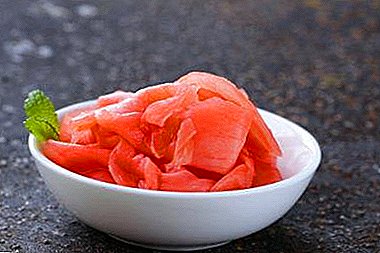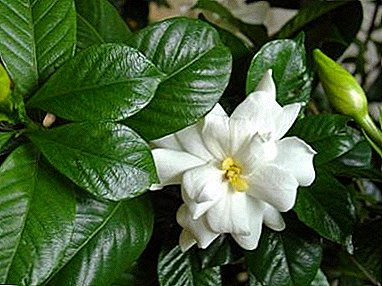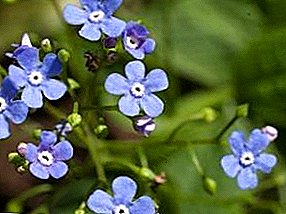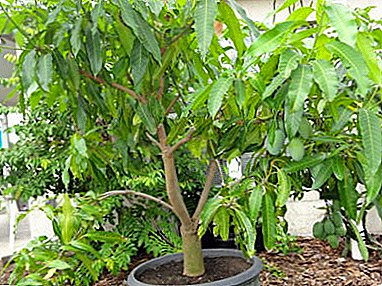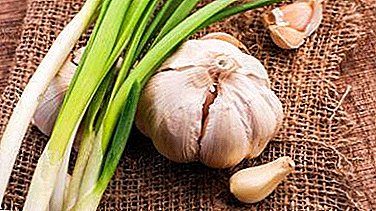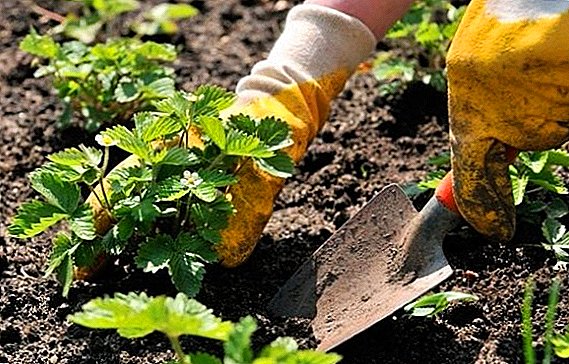 Strawberries have long been firmly established in our gardens and cottages. And it is not surprising, because the taste of this berry is simply unique. And the accumulated experience of cultivation of this culture allows you to experiment with its planting. We learn what is interesting about spring placement of such seedlings in open ground.
Strawberries have long been firmly established in our gardens and cottages. And it is not surprising, because the taste of this berry is simply unique. And the accumulated experience of cultivation of this culture allows you to experiment with its planting. We learn what is interesting about spring placement of such seedlings in open ground.
When to plant strawberries in spring
The cultivation of these berries is associated with some nuances that owners of strawberry plantations have to consider. The future harvest depends on the right time for planting.
Calendar dates
Seedlings placed in open ground with an eye on the weather conditions characteristic of a particular region. If we talk about exact dates, then for different areas they will be like that:
- first of all they start planting in the south (in a mild or subtropical climate, they can be planted from March 5-15);
- in areas with a temperate climate, planting is carried out from April 10 until the end of the month;
- for the northern regions, the interval between 1 and 15 May is more suitable.
But to focus on dates alone in the calendar is not worth it - other factors play a role. 
Weather
Stable air temperature is critical for outdoor planting. not less than + 10 ... +15 ° С.
In many areas, the risk of repeated frosts remains almost all spring - they emerge from the situation, covering the seedlings with film or agrofiber, which are opened on a fine day or at constant + 15 ... +20 ° С.
Important! When grown in a capital greenhouse, external conditions do not play a special role (at worst, they will help out the coating in the form of agrofibre).
In turn, the ground should also warm up (at least up to + 8-9 ° С in the upper layer).
A nice cloudless day is suitable for transfer to the open ground - a cool spring rain will be inappropriate for the first few days (the film also helps out here). 
Features of the region
A variety of weather conditions left their mark on the course of planting and the timing of such operations.
AT Ukraine Spring planting occurs mainly in the middle of April - the beginning of May (in the northern and western regions with not always predictable climate, they are tolerated 1-2 weeks later).
In the south, the same work is carried out much earlier - the soil warms up faster, and there are not so much fear of frost. As a result, the harvest is removed earlier. Moreover, in warm climates, the dates of fruiting are shifted 7-10 days earlier than the standards of different varieties.
AT Moscow region The situation is different: the spring disembarkation is noticeably inferior in popularity to the autumn one, which has been held since late August. The reason for this is a hot summer and not too favorable ecology.
Did you know? Due to its composition, strawberry is considered a natural analogue of Aspirin.
But in Siberia and on The Urals The main tracts of strawberries are laid in the ground just in spring - for these edges, with their harsh climate, this is the only opportunity to get strong seedlings and harvest. By the first cold of the bushes have time to grow well. 
Choosing a place on the site
Strawberry is considered to be demanding on the soil by the plant. Selecting the "patch" for this culture, it is recommended to pay attention to following factors:
- soil structure - it should be soft and loose, it can be black soil, light loam or sandy soil. In addition, the soil is prepared in advance: weeds are removed, loosened, etc. (this stage of work will be discussed a little below);
- groundwater occurrence — their optimum depth is not less than 0.8–1 m. A higher level will make cultivation very difficult (in such cases, they will fill up high, up to 50 cm, ridges);
- location - ideally, seedlings are brought to a small elevation or a gentle southern slope - lowlands will not work;
- illumination - strawberries need only open space. Of course, to achieve a complete lack of shade in the country is not always possible, but the bushes must be in the most lighted points;
- the wind, or rather, its absence - these berries like places protected from gusts;
- predecessor crops - the best "ancestors" in the area will be carrots and parsley, onions and garlic, as well as legumes (beans, soybeans and peas). They saturate the soil with nitrogen, which has a good effect on its structure. But there are also species after which the earth will reluctantly accept seedlings - it is cabbage, zucchini, tomatoes and potatoes.
Important! Solanaceous crops significantly impoverish the soil. Moreover, strawberries planted after them are also threatened by late blight.
Many are interested in the question of how many years you can grow strawberries in the same place. It all depends on the selected variety: many bushes reach their peak already by 2-3 years, while others calmly grow and for 4 years. This figure is the upper limit of the term of the "residence" of strawberries in one location. After this period, the site is given something like a 2-year vacation, during which the bushes are transplanted.
Read also about the nuances of autumn strawberry transplant.
How to choose healthy seedlings when buying
With the place decided, now you need to pick up the strongest seedlings.  To determine their state is quite simple:
To determine their state is quite simple:
- First of all, they evaluate the appearance - there should be no wilted leaves and dry roots;
- healthy leaves from 3 to 5 have a saturated green color. To the touch they are leathery, often with a noticeable down. Wrinkled, pale, or dotted sheets indicate that the seedlings are seriously ill;
- seedlings that are sold with an open rhizome are considered healthy if the length of their fibrous roots is at least 7-8 cm (with a horn thickness of 7 mm or more);
- if the seedlings are sold in pots, the strongest specimens will have time to get used to their tanks (in the case of peat containers, the roots will come out at all - this is quite normal).
Did you know? Every summer in Nemi (Italy) a strawberry festival is held. His "trick" is a huge bowl in which a ton of strawberries is poured and filled with champagne. A gorgeous dessert can try any passerby.
Of course, it is better to make such purchases from trusted sellers, who, if necessary, will give advice on the cultivation of a particular variety. 
Preparatory work
Large strawberry harvest "programmed" long before planting. Of exceptional importance is the pretreatment of the soil.
Did you know? The largest strawberry berry was raised by Japanese Koji Nakao - the fruit is tightened by 250 g!
Preparation of beds
Back in early autumn, the beds were dug up by 25-30 cm (that is, on the bayonet of spades). This removes all remaining roots, especially wheat grass.
Then organic fertilizers are applied - manure or humus. In this case, the norm is 2.5-3 kg / 1 sq. M. m. It is desirable to distribute the layer evenly. Everything planned plot is ready for wintering.
Those who are engaged in the cultivation of hybrid varieties (and they do not always respond to compost), know that such seedlings need special nourishment - a 10-cm layer of substrate is placed on top. For its preparation take equal shares of humus and white sand, peat and sod.
In early spring, the soil is loosened with a rake. 2 weeks prior to planting, preventive soil treatment is carried out in the form of disinfection (this will reduce the risk of fungal diseases).  To do this, prepare a simple composition:
To do this, prepare a simple composition:
- 0.5 kg of lime and 50 g of copper sulphate are added to 10 liters of water;
- the solution is stirred and heated to + 70 ° C;
- application rate - 1 l / 1 sq. m
Important! Ideal for this culture is the soil with an acidity of 5.5-6.5 pH.
A separate topic is the autumn sowing of siderats. This will be a great help for future seedlings and a good healing procedure for the fertile layer. Mustard and rape are best suited for such purposes. However, immediately before laying the strawberries will have to work hard to remove their tops and roots.
Seedlings preparation
This stage is notable for its simplicity. All you need to do is:
- shorten the longest roots to 6-7 cm;
- dip the seedlings in iodine solution 1% and hold for up to 3 days in a cool place;
- The final touch is the treatment of rhizomes with a mixture of clay and mullein in equal shares. This manipulation will speed up engraftment.
Read also about feeding strawberries with iodine.
Many right before planting cut the bottom leaves, leaving only the heart (growth point) and one upper, necessarily straightened, appendage.
Landing rules
The most crucial moment is the landing itself. It is usually carried out on an overcast day, in the late afternoon.  The process itself is generally familiar to everyone:
The process itself is generally familiar to everyone:
- under each seedling, dig a hole 12–15 cm deep and about the same diameter. The standard landing pattern provides for an interval of 35 cm between the holes and 40 cm between the rows;
- A small amount of warm water is poured into the hole, while laying a little bit of humus. After allowing the liquid to absorb, the seedling is placed so that the growing point (heart) is at ground level. Be careful not to damage the roots;
- then they are gently sprinkled with earth and lightly primped up the top layer - the soil will swell slightly from moisture, and a small mound should turn out in the end;
- It remains to water the seedlings (0.5 liters of water for each). If, for some reason, no preliminary top dressing was made, they emerge from the situation by uniformly sprinkling a mixture of 30 g of superphosphate, 15 g of ammonium nitrate and 10 g of potassium salt (dose per 1 square meter).
Did you know? The English call strawberries a strawberry (because of the mulch from this material).
This is a common and “scientific” scheme. But the distances between seedlings and rows may vary depending on the chosen planting method. In addition to the above method, other types are used, which differ in their parameters.  Among those appear:
Among those appear:
- single line method - 15 cm is left between seedlings, while between rows 60 cm each;
- two lines - here the numbers are different - 20x30 cm. But there is one caveat: this technique is more suitable for summer rather than spring disembarkation;
- carpet - provides for a 7x30 cm scheme. With this arrangement, bushes create a special microclimate - quickly growing together, they leave no chance for weeds. Although there is a significant minus - the berries will be small;
- bush - suitable for a small number of seedlings. When viewed from above, they form rectangles measuring 50x70 cm each;
- breeding - in the center of the selected area one sapling is laid, and 5-6 bushes are planted 10 cm from it around the circumference. Between these nests maintain an interval of 30 cm. A great option for a small area and an impressive amount of planting material.
As you can see, the method of planting allows you to experiment with the placement of future bushes. And in order to continue to harvest a record harvest, it is necessary to refresh the basic rules of caring for strawberry massifs.
Video: planting strawberries in spring
Further care
In principle, it boils down to simple and timely procedures.
Watering usually held in the morning. In hot weather or drought, seedlings are watered 1 or 2 times a day, with more mild weather, the frequency is reduced. In the strong and prolonged rain the beds are covered with foil.
However, do not get involved in water procedures - excessive moisture can trigger diseases like powdery mildew or rot.
Strawberries can be affected by diseases such as verticilliasis, fusarium, brown spot.
The first 10 days after planting each bush watered daily (0.5 liters). Before flowering, the bushes are advised to be watered by sprinkling. After that, they switch to ordinary watering using warm (+16 ° C and more) water, trying not to touch the fruits and flowers - moisture should only get into the soil.
Whisker cut do shears, dry summer morning. Removed only overgrown mustache. Uterine bushes can be used to obtain a mustache for 2-3 years (they are cut off 2 weeks before planting).
Learn how to cut strawberry leaves and mustache.
The same applies to the leaves - the most violent are removed, which is beneficial to the entire bush: it protects it from pests and diseases.  So that the peduncles do not touch the ground and do not overheat in the heat, the plants mulch back in the spring. A small layer of straw or dung, compost or humus will be suitable as a coating. As an option - thick polyethylene, small screenings or stone powder.
So that the peduncles do not touch the ground and do not overheat in the heat, the plants mulch back in the spring. A small layer of straw or dung, compost or humus will be suitable as a coating. As an option - thick polyethylene, small screenings or stone powder.
Learn more about strawberry care: in spring, during flowering, after harvest, in autumn.
The same materials are used in late autumn to protect from the cold. For these purposes, they can be replaced by pine branches or agrofibre.
Do not forget about fertilizerthat contribute to the following algorithm:
- Potassium and nitrogen compounds (potassium sulfate, wood ash, potassium magnesium, etc.) are used during budding. Dosage and frequency depend on the grade - study the data on the package;
- flowering time is the best time for serving chicken dung or potassium nitrate;
- after harvesting, spraying with nitroammofosca follows (2 tablespoons per 10 liters of water are taken);
- final feeding falls on the very end of summer - the beginning of autumn. Take 30 grams of urea per 10 liters of water. The liquid can be replaced with granules (80-130 g / 1 sq. M).
Read also about strawberry feeding in spring and autumn.
 After reviewing the subtleties of agricultural technology, we will find out the main thing that interests anyone who plans to grow spring strawberries - when to expect a harvest.
After reviewing the subtleties of agricultural technology, we will find out the main thing that interests anyone who plans to grow spring strawberries - when to expect a harvest.
Practice shows that during the spring planting to eat juicy berries will succeed no earlier than the middle or even the end of summer. Note that these periods are observed when working with remontant varieties - seedlings, which are simpler, can wait until next season (or give small fruits in the first year).
Important! The first dressing in the form of infusion of bird droppings is made 2 weeks after planting.
In general, before embarking on soil preparation, consider whether you are ready to wait for a full-fledged harvest or if the autumn planting method is more attractive.
Video: spring care and feeding strawberries
Gardeners reviews


We learned what is remarkable about the technology of spring planting strawberries, and what techniques it provides. We hope this information will be useful to you, and the grown strawberries will surprise you with an unprecedented harvest.



